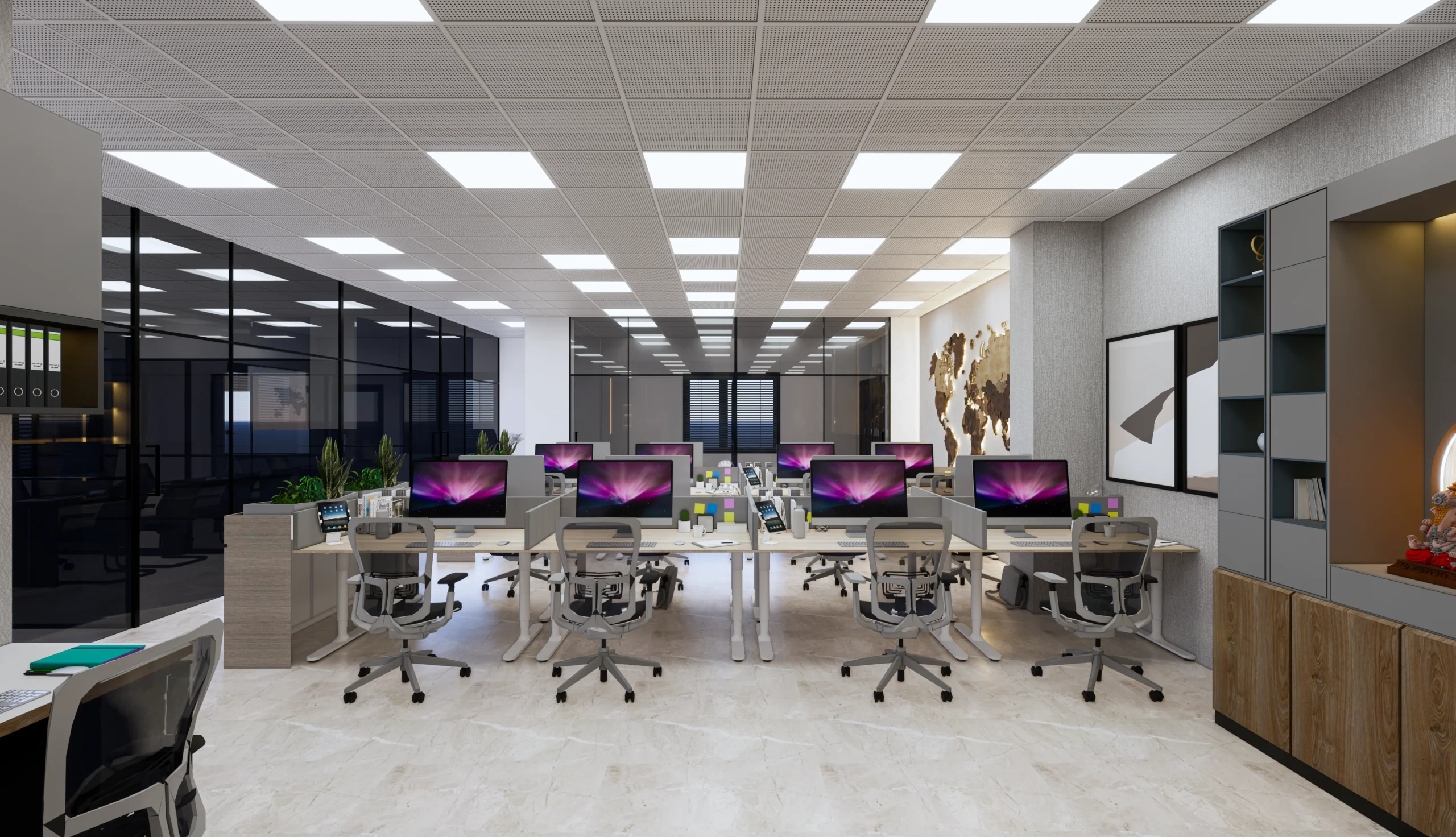In the modern world, where workspaces are more than just physical locations for conducting business, the role of office interior designers has evolved into something truly transformative. The traditional office setting with rows of cubicles and monotonous color schemes has given way to dynamic, creative, and inspiring work environments that cater to the needs of both employees and businesses. This exploration delves into the fascinating realm of office interior design, shedding light on its significance, the evolving trends, and the ways in which it influences productivity, employee well-being, and corporate culture.
The Significance of Office Interior Design
The significance of office interior design extends far beyond aesthetics. It encompasses a multitude of aspects that collectively contribute to the success of a business. Here are some key dimensions in which office interior design plays a crucial role:
- Productivity and Efficiency: Well-designed office spaces are optimized for workflow. They provide ergonomic furniture, efficient layouts, and access to resources that enable employees to work effectively and accomplish tasks efficiently.
- Employee Well-Being: A carefully curated office interior can have a profound impact on the well-being of employees. Natural light, comfortable seating, greenery, and ergonomic design elements all contribute to a healthier and more pleasant work environment.
- Corporate Identity: Office interiors reflect a company’s brand and culture. The design choices, color schemes, and use of corporate branding elements convey a message about the company’s values and identity to both employees and visitors.
- Attracting and Retaining Talent: In today’s competitive job market, companies vie for top talent. An inviting and aesthetically pleasing office can be a deciding factor for potential hires, and a positive workspace can also help in retaining existing employees.
- Collaboration and Creativity: Many modern office designs prioritize collaboration and creativity. Open layouts, breakout spaces, and collaborative zones encourage interaction among employees, fostering innovation and idea sharing.
- Flexibility and Adaptability: The design of office interiors needs to be flexible to accommodate changing needs. As companies grow, downsize, or restructure, the workspace should be adaptable to these changes without requiring a complete overhaul.
Evolving Trends in Office Interior Design
The world of office interior design is dynamic and ever-evolving. Designers constantly seek innovative ways to create spaces that not only meet the practical needs of businesses but also inspire and energize employees. Here are some notable trends that are shaping the future of office interiors:
- Biophilic Design: Biophilic design incorporates natural elements into the workspace, such as plants, natural materials, and ample access to natural light. This design approach has been linked to increased employee well-being, productivity, and creativity.
- Flexible Workspaces: The rise of remote work has led to a greater emphasis on flexible office spaces. Designers are creating environments that can adapt to various work modes, from individual focus to team collaboration.
- Tech Integration: Technology is an integral part of the modern office. Office interiors are designed to seamlessly integrate technology, from smart lighting and climate control to video conferencing and wireless charging stations.
- Sustainability: Sustainable design is becoming increasingly important. Office interiors are incorporating eco-friendly materials, energy-efficient systems, and sustainable practices to reduce environmental impact.
- Activity-Based Working: Activity-based working allows employees to choose the type of space that best suits their task at hand. Designers create a variety of work zones, including quiet spaces, collaborative areas, and relaxation zones, to accommodate different work styles.
- Wellness Spaces: Wellness has taken center stage in office design. Designers are incorporating wellness rooms, fitness areas, and mindfulness spaces to promote employee health and well-being.
The Impact on Productivity and Corporate Culture
The design of office interiors has a profound impact on productivity and corporate culture, influencing the way employees work and interact with one another. Here’s how:
- Enhanced Productivity: Thoughtfully designed workspaces can boost employee productivity by reducing distractions, providing ergonomic furniture, and creating an environment conducive to focused work.
- Fostering Collaboration: Open layouts, collaborative zones, and breakout spaces encourage spontaneous interactions and idea sharing among employees, fostering a culture of collaboration and innovation.
- Employee Engagement: An engaging and aesthetically pleasing workspace can improve employee engagement. When employees feel comfortable and inspired by their surroundings, they are more likely to be motivated and committed to their work.
- Cultural Reflection: Office interiors reflect a company’s culture and values. Whether it’s a startup with a playful and creative atmosphere or a corporate giant with a more formal environment, the design of the office communicates these aspects to employees and visitors alike.
- Employee Well-Being: Design elements that prioritize employee well-being, such as access to natural light, comfortable seating, and wellness spaces, contribute to a healthier and happier workforce.
- Talent Attraction and Retention: A well-designed office can be a powerful tool for attracting and retaining top talent. It sends a message that the company cares about its employees’ comfort and work environment.
In conclusion, office interior design is a multidimensional field that goes beyond aesthetics to impact productivity, employee well-being, and corporate culture. As businesses recognize the value of investing in well-designed workspaces, the field of office interior design continues to evolve, incorporating innovative trends and approaches. The office of today is a dynamic, flexible, and inspiring space that reflects the changing nature of work and the importance of creating environments where employees can thrive. It is through the fusion of creativity and functionality that office interior designers shape the future of workspaces, providing businesses with the tools they need to succeed in an ever-evolving world.

